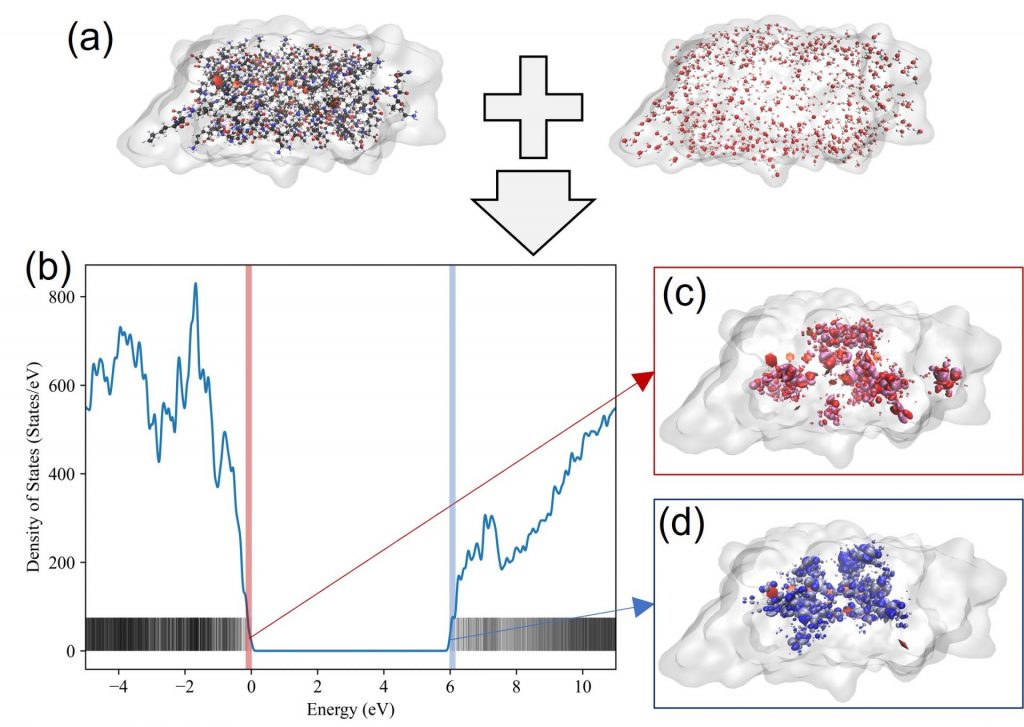2022 IRG-2 Publication: Protocol for unbiased insight into electron transfer in bio-inspired wires
To better design conductive and bio-compatible nanowires, the UCI MRSEC team, consisting of the groups from BU and UCI, aims to understand their electronic structure and electron transfer mechanism.
The team is systematically developing a protocol to combine:
i. Classical molecular dynamics (MD) to obtain thermally-averaged solvated nuclear positions
ii. All-atom first-principles density functional theory (DFT) calculation of the electronic structure
iii. Conductivity models associated with electron transfer mechanisms
For solvated ACC-Hex, recently synthesized by the UCI group (Hochbaum) with demonstrated efficient conductivity
• From all-atom DFT simulations including an explicit solvation shell (Figure 1 a), the team demonstrates that the near-gap orbitals span ACC-Hex and are nearly-degenerate (Figure 1 b-d).
• Considering structural fluctuations due to finite temperature, the team shows that there is a dynamic path for conductivity.
• These calculations provide a basis for incorporating DFT input into previously established conductivity models for biological systems

D. K. Lewis, Y. Oh, L. N. Mohanam, Q. Cui, S. Sharifzadeh (Boston University)
M. Wierzbicki, N. L. Ing, L. Gu, A. Hochbaum, R. Wu (University of California, Irvine)
Lewis DK, Oh Y, Mohanam LN, Wierzbicki M, Ing NL, Gu L, Hochbaum A, Wu R, Cui Q, Sharifzadeh S. “Electronic Structure of de Novo ACC-Hex from First Principles” The Journal of Physical Chemistry B, 126, 4289-4298 (2022). https://doi.org/10.1021/acs.jpcb.2c02346